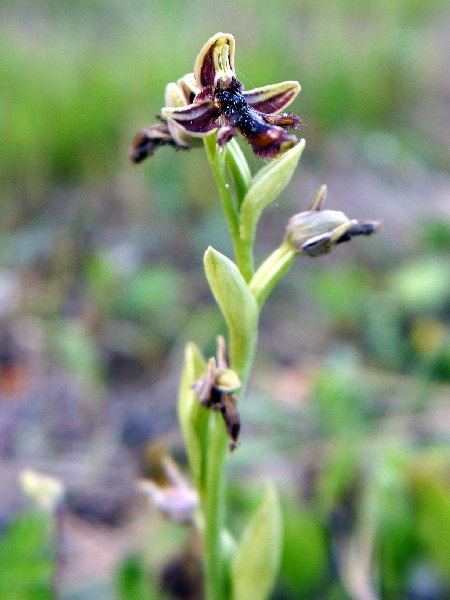|
|
|||||||||||||||||||
|
|
|||||||||||||||||||
 |
|
As I have said, this is my first orchid trip to Rhodes. Being a rather far flung island it does have species absent from other nearby islands, so I have great hopes and a list of wish-to-see species. Driving in Rhodes is not dissimilar to Crete or Cyprus. Do not underestimate the time it takes to get from A to B, Even going from Rhodes Town in the north down to the southern tip will take in excess of two hours (especially if you have the smallest, most underpowered car in the rental stable). Plenty of S bend after S bend to negotiate, and plenty of car damaging rocks to avoid up in the hills. At least some of the roads in the interior marked on our 2003 map as gravel tracks have been tarmaced since our first visit, but some gravel roads do remain. It is perhaps lucky that the orchid season gets going here before the tourist season proper. Driving there in streams of cars, and following tour buses up in the hills would be a nightmare. I have to say that the orchids, particulalrly in numbers, did not live up to expectations. This may be just a 2023 thing, or expectations were inflated by glowing reports. Certainly, we have stopped frequently, where we safely can, at what would be a likely orchid site on Crete and found nothing. Still I have no regrets about going, especially now Covid restrictions are virtually over. This is my first trip to the Med for orchids since Sicily in 2019. Rhodes is a well trodden island for orchid lovers and perhaps I could have joined a trip or asked for some pinpoint locations to visit. But that misses the point. I wanteed to find my own sites and make my own discoveries, using the routes featured in the Kretzschmaer book foremost as a reference to which areas to travel. Identification, particularly of the Ophrys species, will be difficult due to different authorities having vastly different opinions on what constitutes a species. Previously I have used Orchids of Britain and Europe by Delforge. He is well known for being perhaps the ultimate splitter with over 300 European Ophrys species. On the other hand I have a copy of Ophrys The Bee Orchids of Europe by Pederson and Faurholdt. They veer the other way and reduce the species down to a mere 19, with many of Delforge`s species being classed as local varieties not worth a mention. Middle ground is supplied by Field Guide to Orchids of Britain and Europe by Buttler and Wild Orchids of Britain and Europe by Davies, Davies and Huxley. These two are a bit long in the tooth being published in 1991 and 1983 respectively. Consequently I shall mostly rely on Orchids Crete and Dodecanese by Kretzschmar, Kretzschmar and Eccarrius. Middle ground again, but its best point is that it focusses on those said islands. However, where there is disagreement betwen authors, in the first instance and in the spirit of diversity and inclusively, I shall try to report what Delforge and Pedersen call those specimens. July brought wildfires to the centre of the island. These quite quite extensive and devastating to wildlife, locals and holiday-makers. They centred on many of the places were visited and passed through. However, for the orchids at least it is not all bad news. Their season would have been over, seed set and they would have retreated beneath the soil avoiding the usual heat and of summer and lack of rain. The fires may have cleared much undergrowth and general detritus providing new areas to colonise. The ash will provide much needed nutrients. Nature has a way of boucing back.
|
|
|
||||||||||||||


